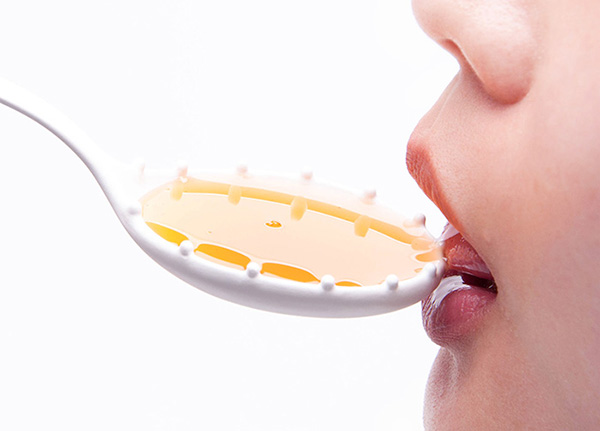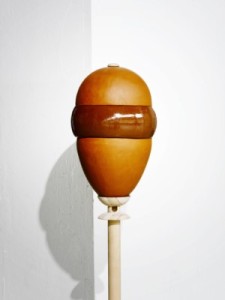
Tableware as Sensorial Stimuli. (Image credit: Jinhyun Jeon, http://jjhyun.com/?portfolio=tableware-as-sensorial-stimuli-2)
Over the past few months, a number of design and food trends have been catching my attention. One is the idea of slowing down, inherent in the work of many student design projects I’ve recently seen. Afterall, what can (hopefully) inspire us to slow down more than food? When preparing it, we are held to food’s properties and ritualized making. When eating it, we savor the present moment when a delicious bite hits our tongue. In harvesting it, we respect its cycles. The mass production of food during the twentieth century gave us bland, processed, and thoughtless food experiences that many designers, chefs, farmers, artisans, and others are seeking to overturn with an emphasis on rediscovering and embracing our gastronomical roots. Design students are very much a part of this conversation, proposing solutions that provide provocative commentary.
ECAL Low-Tech Factory/Oncle Sam from ECAL on Vimeo.
For instance, the Oncle Sam Popcorn Maker by Laurent Beirnaert, Pierre Bouvier, and Paul Tubiana, students at University of Art and Design Lausanne/ECAL in Switzerland, is a Rube Goldberg-esque machine that makes popcorn one kernel at a time. A single tea light candle heats a cup of oil to pop the corn kernel. The Oncle Sam celebrates the production process of popcorn by stripping it down to the basics, encouraging its consumer to savor each and every kernel.
A particularly sensual exploration into how we eat is Jinhyun Jeon’s Tableware as Sensorial Stimuli (see image above), presented as her Design Academy Eindhoven graduation project. The series proposes that tableware is more than a mere vehicle for getting food into our mouths; it can provide a formative experience with our food. Jeon designed tableware synesthetically, focusing on each utensil’s ability to enhance the texture, temperature, color, volume, or form of each bite. In so doing, the tableware offers the possibility of heightening our senses during consumption to enrich experience and taste.

Beehive. (Image credit: Design Academy Eindhoven, http://www.designacademy.nl/EVENTS/Graduation12/Project.aspx?ProjectId=369)
For Coen de Koning’s Design Academy Eindhoven graduation project, Beehive, he designed an object to encourage urban dwellers to rekindle their relationship to bees with the aim to restore bee – and beekeeper – populations. The hive is not intended for the production and harvesting of honey, but rather to provide a habitat for bees with minimal impact on the keeper and the bees. (Those that become particularly interested in the bees may take their engagement further and learn the traditional skills of beekeeping and honey harvesting.) Beehive is an object that provides insightful commentary into our desire to reconnect with natural harvesting systems.